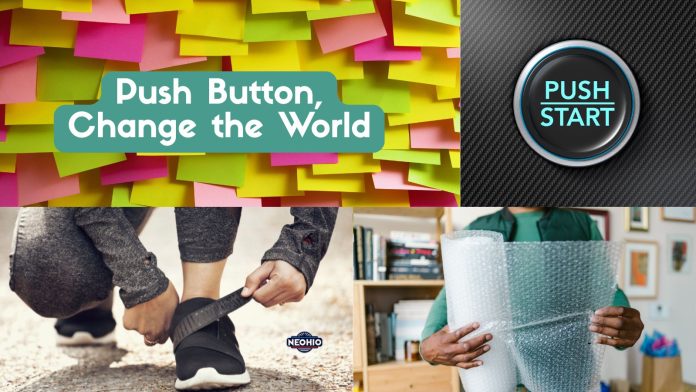The next time you press a button to start your car instead of fumbling for keys, thank the innovators who saw a simple daily annoyance and envisioned a better way.
Push-to-start ignition systems, now standard on most vehicles, emerged from luxury automakers like Mercedes-Benz in the early 2000s. What seemed like a small convenience has become one of those “how did we live without this” technologies that transforms daily routines.
The innovation follows a pattern seen throughout history – someone notices a common frustration and asks “why does it have to be this hard?”
When Accidents Become Breakthroughs
Velcro: Nature’s Lesson
Swiss electrical engineer George de Mestral invented the hook-and-loop fastener after a 1941 hunting trip in the Alps. When burrs from burdock plants stuck to his pants and his dog’s fur, most people would have brushed them off in irritation.
De Mestral looked closer. Under a microscope, he discovered thousands of tiny hooks that efficiently grabbed onto fabric fibers and dog hair. The observation sparked an idea that took more than a decade to develop, earning him a patent in 1955.
Velcro initially struggled in the market because clothing manufacturers thought it looked cheap. Then NASA adopted it for keeping objects attached to spacecraft walls during weightless flight, suddenly making the fastener “space age” and desirable.
Post-it Notes: The Weak Adhesive That Stuck
Another accidental discovery that changed how we communicate happened at 3M in 1968. Dr. Spencer Silver was trying to create a super-strong adhesive for aerospace applications when he accidentally developed the opposite – a weak, reusable adhesive that stuck lightly to surfaces without leaving residue.
For six years, Silver promoted his “solution without a problem” within 3M, struggling to find a practical use. Then colleague Art Fry had his own moment of frustration during church choir practice. The paper bookmarks in his hymnal kept falling out and getting lost.
Fry remembered Silver’s unusual adhesive and applied it to small pieces of paper. The result became Post-it Notes – now one of the world’s most recognizable office products, with billions sold annually. Even the signature yellow color was chosen by accident, using scrap paper from a neighboring laboratory.
Bubble Wrap: From Wallpaper Flop to Packaging Hero
The pattern continues with Bubble Wrap, invented in 1957 by engineers Alfred Fielding and Marc Chavannes in New Jersey. They were trying to create textured wallpaper by sealing two plastic shower curtains together, trapping air bubbles between them to give walls a modern, three-dimensional look.
The wallpaper was a commercial flop. Nobody wanted plastic-covered walls. The inventors then tried marketing it as greenhouse insulation, but that failed too. Their “solution without a problem” sat unused for three years until marketer Frederick Bowers realized the air-filled cushions could protect fragile items during shipping. IBM became their first major customer, using Bubble Wrap to protect their new 1401 computers during transport.
The Innovation Gap
Many people develop clever solutions to everyday problems but get intimidated by the development process. The path from idea to market can seem overwhelming, with concerns about prototypes, patents and manufacturing costs.
Innovation experts suggest starting small and cheap. Document everything with detailed notes and sketches. File a provisional patent application for promising ideas – it costs $300-1600 and provides a year of protection while developing the concept further.
Most importantly, test ideas with real users who face the problem, not just supportive friends and family. Connect with local inventor groups or maker spaces for guidance and resources.
Many successful inventors never manufacture their products themselves, instead licensing ideas to established companies that handle production and distribution.
Hidden Opportunities
The best innovations often solve problems so common we accept them as normal. Someone at an auto company got tired of digging for keys. De Mestral wondered why burrs stuck so well. Both observations led to products now used worldwide.
The next revolutionary idea might be hiding in your daily routine – in those small moments of friction we all experience but rarely question. The key is paying attention and asking “what if there was a better way?”
Discover more from Northeast Ohio News
Subscribe to get the latest posts sent to your email.











